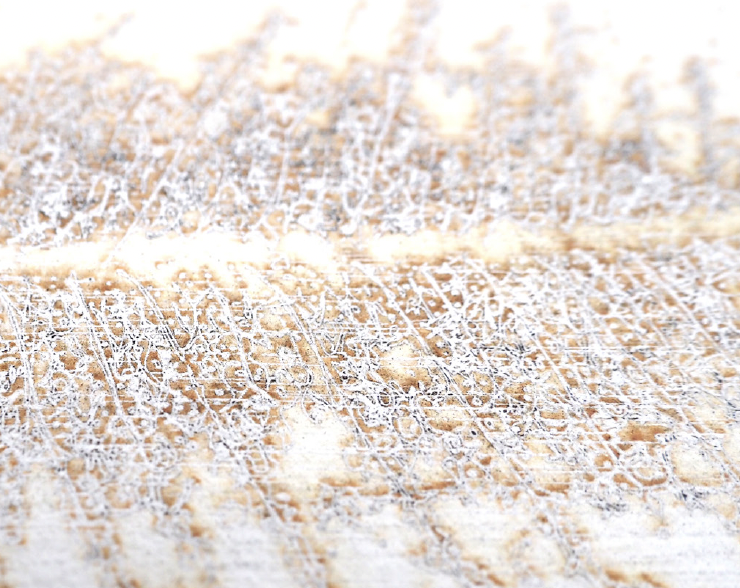Abstract
Science, thought and art meet within the limits of reality, in how reality is understood and represented.. This is where the art-techne binomial materialises graphics, which in turn facilitate the faithful or fictionalised reproduction of our environment. The vocation of science is to advance explanations of the world through a supposedly objective gaze, and the vocation of art is to broaden this understanding by evoking other sensitive and unexpected perspectives. Given the historical relationship between printmaking and the dissemination of knowledge in all fields and the natural sciences in particular, we would like to present the graphic derivations of a collaborative experience between a printmaking artist-cum-researcher and a researcher in forestry science.
The experience: A multidimensional approach to the plant: An art and science project started at the end of 2021 when the author, Antía Iglesias, an art student from the interdisciplinary PhD programme in Creativity, Social Innovation and Sustainability (Universidade de Vigo, Spain) (Fig. 1) collaborated with another student, Marion Boisseaux, a PhD student in Tropical Ecology (Université de Guyane) during a research stay in French Guyana. The two students began a joint project to analyse and represent tropical tree seedling species (that Marion had selected in her DRYER project, which observed the effect of drought due to climate change) using their respective technical, numerical and graphical languages, and to provide multiple representations of the plants.
This paper aims to present this common experience through the description and analysis of the process that was followed, from a botanical illustration to obtaining graphic digressions from these plants. We will now focus on the derivations obtained from the digital biomimetic record, laser engraving, and printing experimentation.
References
Alsina, P. (2007). Arte, ciencia y tecnología. Barcelona: Editorial UOC.
Didi-Huberman, G. (2008). La ressemblance par contact. Paris: Éditions de Minuit.
Heyvaert, A. (2020) “El objeto del dibujo y su experiencia, para Marco Moreira”, ESTÚDIO, Volume 11, número 29, Lisboa: CIEBA, Universidade de Lisboa
Leal, E. (2018). “Ambulant flow: Following the materiality of print media”, IMPACT 10 UWE Bristol, pp. 246-247.
Moreira, M. (2021). “La mecánica del dibujo”, Laboratorio escóitasme? Un caderno de bitácora, A Coruña: Fundación Luis Seoane.
Muñiz, J. A. C. (2007). Mapas invisibles para una gráfica electrónica. Barcelona: Ed. Grupo dx5, Universidade de Vigo and Comanegra.
Pastor, J. (2013). Sobre la identidad del grabado. Santiago de Compostela: Ed. Fundación Gonzalo Torrente Ballester.
Penone, G. & Jaunin, F. (2012). Giuseppe Penone: Le regard tactile. Lausanne: Bibliothèque des arts.
Penone, G. (2021). Sève et pensée. Paris: Bibliothèque Nationale De France.
Ruiz de Samaniego, A. (2014). Eidos da imaxe. Grafias dos feitos e do pensamento. Vigo: Universidade de Vigo and MARCO.
Soler, A., Alcalá, J. R., Tortosa, R. & Prins, L. (2016). Procesos: El artista y la
Máquina. Reflexiones en torno al MediaArt histórico. Cuenca: Universidad de Castilla-La Mancha.
Soler, A. at al. (2004). La matriz intangible. Vigo: Ed. Grupo dx5 – Universidade de Vigo.

This work is licensed under a Creative Commons Attribution 4.0 International License.
Copyright (c) 2024 Anne Heyvaert , Antía Iglesias Fernández
